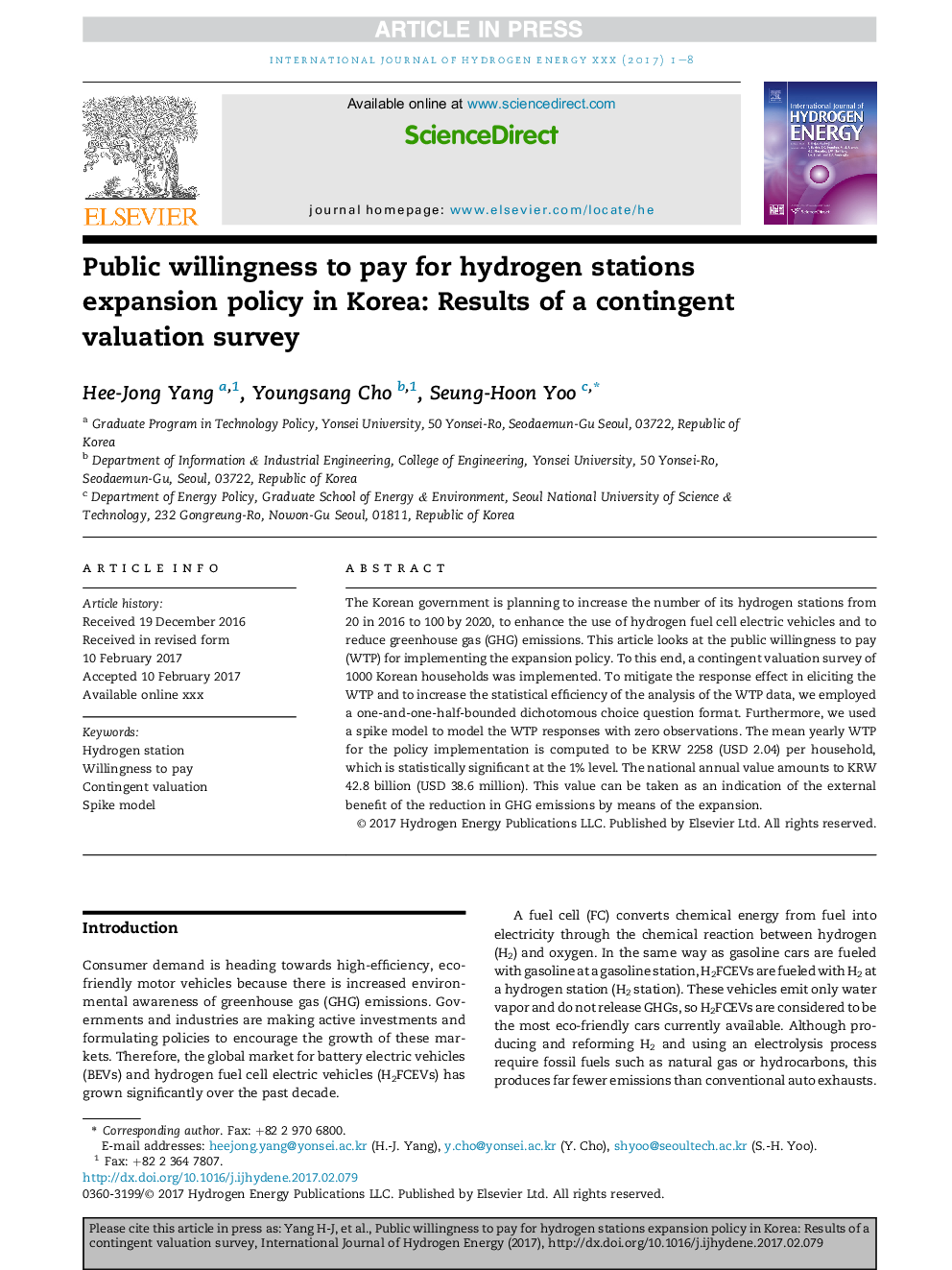| Article ID | Journal | Published Year | Pages | File Type |
|---|---|---|---|---|
| 5145682 | International Journal of Hydrogen Energy | 2017 | 8 Pages |
Abstract
The Korean government is planning to increase the number of its hydrogen stations from 20 in 2016 to 100 by 2020, to enhance the use of hydrogen fuel cell electric vehicles and to reduce greenhouse gas (GHG) emissions. This article looks at the public willingness to pay (WTP) for implementing the expansion policy. To this end, a contingent valuation survey of 1000 Korean households was implemented. To mitigate the response effect in eliciting the WTP and to increase the statistical efficiency of the analysis of the WTP data, we employed a one-and-one-half-bounded dichotomous choice question format. Furthermore, we used a spike model to model the WTP responses with zero observations. The mean yearly WTP for the policy implementation is computed to be KRW 2258 (USD 2.04) per household, which is statistically significant at the 1% level. The national annual value amounts to KRW 42.8 billion (USD 38.6 million). This value can be taken as an indication of the external benefit of the reduction in GHG emissions by means of the expansion.
Related Topics
Physical Sciences and Engineering
Chemistry
Electrochemistry
Authors
Hee-Jong Yang, Youngsang Cho, Seung-Hoon Yoo,
